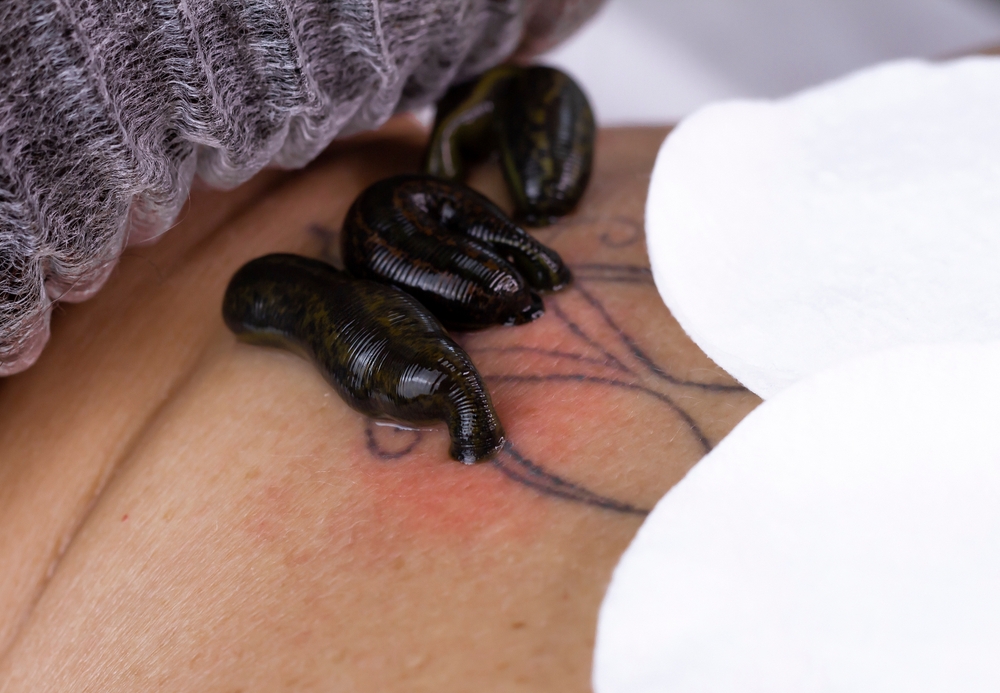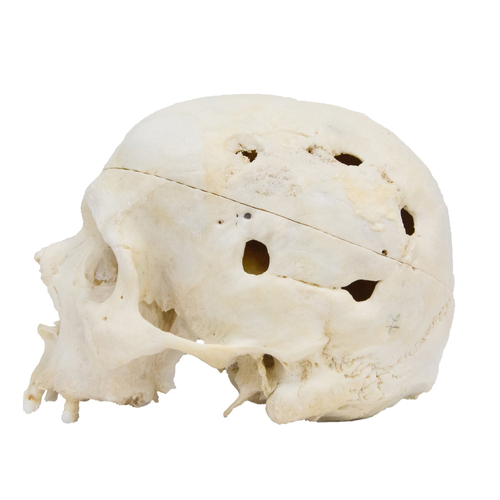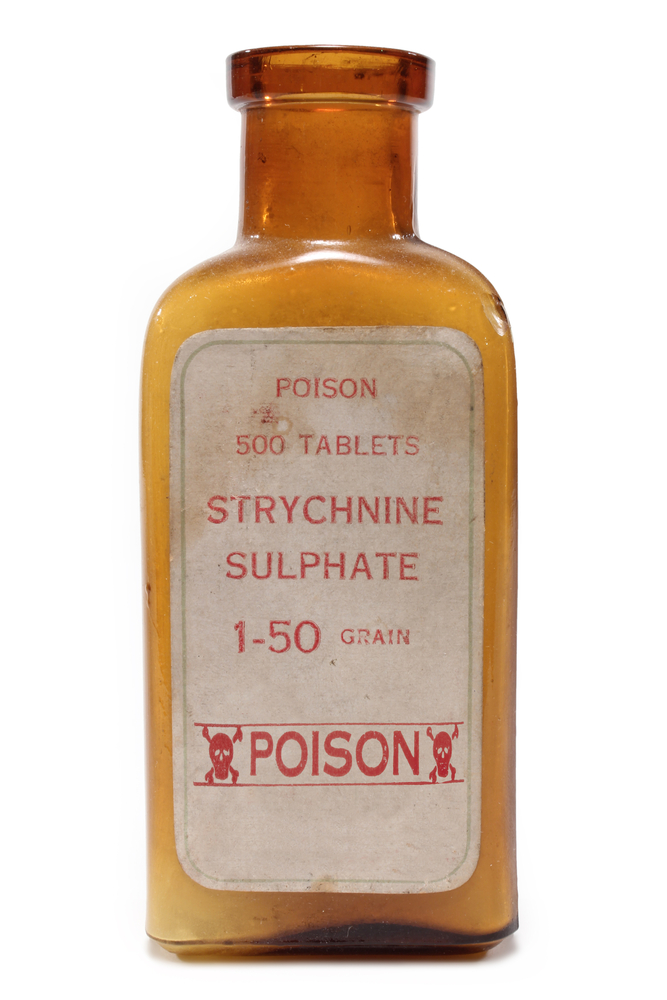What's On This Page?
ToggleToday, we’re going to take a walk down medicine’s historical hall of shame! The medical treatments done in the past are among the strangest and most horrific I’ve ever heard of, and yet they used to be considered effective. Are you curious?
And later on, I’ll tell you what we do today that might be considered gruesome in the future!
As a pharmacist and health advocate, I love learning about the evolution of medicine and how far we’ve come. While some of these treatments may seem barbaric by today’s standards, it’s important to remember that they were once considered cutting-edge solutions.
Here are 10 fascinating and bizarre historical remedies:

1. Bloodletting as a Medical Treatment?!
One of the most widespread medical treatments in ancient and medieval times was bloodletting. It was a common practice in many countries across the world, but it was particularly widespread in Europe and the Middle East. Doctors believed many ailments were caused by an imbalance of the four “humors” – blood, phlegm, black bile, and yellow bile.
In an attempt to restore balance, they would cut into a patient’s vein or artery and drain blood! This was done for fever, headache, and many other conditions including mental health problems.
Bloodletting was often done with leeches or sharp instruments, which could lead to infection and, in some cases, death. Fortunately, this practice has been left in the past. Here’s where you can learn more about the HISTORY.
2. Trepanation

Trepanation, the practice of drilling holes into the skull, dates back to prehistoric times. Egad! Remember, there was no such thing as lidocaine or propafol back then! Trepanation was based on the belief that by creating an opening in the skull, evil spirits or pressure could be released, thereby alleviating headaches, epilepsy, and other neurological conditions.
The procedure was incredibly risky and often led to infections or even death. You’d think that doctors who did this treatment were evil doctors, but at the time, it was considered reasonable! Despite the dangers, trepanation persisted well into the 18th century.
3. Mercury as a Cure-All
Once hailed as a universal cure, mercury was used to treat a plethora of ailments, including syphilis, toothaches, and even constipation. Ingesting or applying mercury to the body, however, is extremely toxic and can cause a wide range of symptoms, such as tremors, mood swings, and kidney failure.
The most notorious case of mercury poisoning comes from the hatters in the 19th century, who used mercury in the process of making hats. This led to the expression “mad as a hatter” due to the neurological damage it caused.
4. Tobacco Smoke Enemas
In the 18th century, tobacco smoke enemas were a popular treatment for various ailments, including respiratory issues, headaches, and even drowning victims. A tube was inserted into the rectum, and tobacco smoke was blown into the patient’s body.
This practice was based on the belief that tobacco smoke could warm the body and stimulate respiration. Unfortunately, the treatment was not only ineffective but also dangerous, as it could cause nicotine poisoning. Tobacco leaves are quite large, and I’ve posted an image here of a modern tobacco farmer in the field.

5. Lobotomies were Medical Treatments
The lobotomy, a procedure in which the connections between the prefrontal cortex and other parts of the brain are severed, was popular in the 20th century as a treatment for mental illness. The surgeon would go through the eyes, or above the eye socket and remove (or disconnect) a portion of a person’s brain!
Developed by Portuguese neurologist Egas Moniz, it was initially seen as a breakthrough in psychiatry. Lobotomies, a form of psychosurgery, were primarily performed on patients with severe mental illnesses, such as schizophrenia, bipolar disorder, and severe depression.
The goal of the procedure was to alleviate the symptoms of these psychiatric conditions by severing connections in the brain’s prefrontal cortex. However, the surgery often left patients with severe side effects, such as personality changes, cognitive impairment, and even death.
By the 1970s, and it’s hard to believe it went on into the 1970s (!) the lobotomy had fallen out of favor as safer treatments and pharmaceuticals became available for emotional and mental health problems. You may want to read my other article, Why Some Antidepressants Work and Some Don’t.
6. Animal-Dung Ointments were Medical Treatments!
In ancient Egypt, animal dung was believed to possess healing properties and was used to treat a variety of ailments. For example, crocodile dung was used as a contraceptive, and a mixture of fly dung and honey was applied to infected wounds. Gosh!!!

While the antibacterial properties of honey have been scientifically proven, the use of animal feces in medicine only served to introduce harmful bacteria and parasites into already vulnerable patients.
This often worsened the infection and could lead to severe complications, such as sepsis or the spread of the infection to other parts of the body. Thankfully, this unsanitary practice has been flushed away as our understanding of hygiene, microbiology, and the nature of infections has vastly improved.
7. Mummy Powder
The use of powdered mummies as a medical treatment dates back to the 12th century and persisted well into the 19th century. It was believed that the powder, made from ground-up Egyptian mummies, possessed curative properties and could treat a wide range of conditions, such as headaches, stomach ailments, and even blood clots.
This bizarre medical treatment was not only ineffective but also contributed to the destruction of valuable historical artifacts. Thankfully, modern medicine no longer relies on such macabre ingredients.
8. Hemiglossectomy for Stuttering
During the 18th and 19th centuries, it was believed that stuttering was caused by an unusually thick or long tongue. To “cure” this condition, some doctors would perform a hemiglossectomy, a procedure in which a portion of the tongue was surgically removed.
This extreme medical treatment was not only ineffective in treating stuttering but also led to severe complications, such as infection, excessive bleeding, and difficulties with speech and swallowing. Today, we have a better understanding of the causes of stuttering and utilize speech therapy and other non-invasive treatments to help those affected.

9. Strychnine as a Stimulant
Strychnine, a highly toxic alkaloid, was once used as a stimulant and performance-enhancing substance in the late 19th and early 20th centuries. It was believed to increase alertness, strength, and endurance, and was even an ingredient in some patent medicines and tonics.
However, strychnine is also a potent poison 🔥 that can lead to muscle spasms, convulsions, and, in high doses, death. Thankfully, the dangerous use of strychnine as a stimulant has been abandoned, and we now have safer alternatives to improve focus and energy.
10. Cocaine as a Miracle Cure
Feeling tired? In need of a pick-me-up? In the late 19th and early 20th centuries, people had a “Coca-Cola” of a solution: cocaine! This potent stimulant was hailed as a miracle cure for various ailments and was widely used in both medicine and everyday products, including the original Coca-Cola formula.
As an anesthetic, cocaine was used in eye, nose, and throat surgeries, as well as in dentistry, due to its numbing properties. It was also prescribed to treat morphine addiction and was a common ingredient in over-the-counter medications for headaches, toothaches, and other minor ailments.

However, the addictive and dangerous nature of cocaine eventually became apparent, and its use in medicine and everyday products declined. In the United States, the passage of the Harrison Narcotics Tax Act in 1914 began the process of regulating and restricting the use of cocaine and other narcotics.
Today, we turn to safer alternatives for a boost of energy, leaving the “coke craze” in the past where it belongs.
What About Today’s Medical Treatments – How Will They Stack Up in 100 Years?
While it’s impossible to predict exactly which treatments used today will be considered inhumane in the future, there are some current medical practices that might be viewed as outdated or even primitive as our understanding of the human body, diseases, and technology advances over the next 100 years.
Current areas of medicine that should be improved:
Chemotherapy: Chemotherapy is currently the most common medical treatment for cancer. However, as effective as it is in some patients, no one denies that most of the drugs come with harsh and lingering side effects, such as pain, bone marrow suppression, hair loss, nausea, and fatigue, due to their non-selective nature in killing both cancerous and healthy cells.

As targeted cancer therapies and personalized medicine continue to advance, chemotherapy might be seen as a crude and overly aggressive approach to treating cancer in the future.
Electroconvulsive Therapy (ECT): I thought this medical treatment was already obsolete, but ECT is still occasionally used today to treat severe cases of depression and other mental health conditions.
It involves passing electrical currents through the brain to induce a controlled seizure… but anesthesia wasn’t always given! The treatment was modified in the 1950s to include muscle relaxers and anesthesia thereby reducing pain from the electricity. Although ECT has proven effective for some patients, it is still a controversial treatment due to its side effects, such as memory loss and confusion.
As our understanding of the brain and mental health disorders improves, and as new, more targeted treatments are developed, ECT might be considered a barbaric method in the future.
Organ Transplantation: Organ transplantation saves lives, but it is an invasive procedure that comes with the risk of complications, such as organ rejection and infection. In the future, advancements in regenerative medicine, tissue engineering, and 3D bioprinting could provide alternatives to transplantation, making it possible to grow replacement organs from a patient’s own cells.
This would significantly reduce the risks associated with transplantation and might make the practice seem primitive by comparison.
Amputations: Amputations are a medical treatment sometimes necessary to save a patient’s life or to prevent the spread of infection. However, they can be life-altering and often require the use of prosthetic limbs. In the future, advancements in regenerative medicine and tissue engineering could offer alternatives to amputations, allowing for the regeneration of lost or damaged limbs. What a dream if that could occur.
It would make amputations seem like a harsh and outdated solution to medical problems and would provide more comfort.
Of course, these are just speculative examples, and I’m sure I’ve left a medical treatment off the list! If you’d like to email me with more comments, you can do so at scriptessentials@gmail.com. As our knowledge and technology continue to progress, we can look forward to a future where medical treatments are increasingly effective, less invasive, more comfortable, and more personalized.
Summary
Looking back at these strange and horrific medical treatments, it’s clear that our understanding of health and medicine has come a long way.
While it can be shocking to learn about these past practices, it’s essential to appreciate the progress we’ve made and continue to advance our knowledge for the betterment of human health.
As a pharmacist and health advocate, I encourage you to stay informed about your health and always consult with a trusted healthcare professional before starting any new treatment. Medicine is constantly evolving, and we must stay vigilant to ensure that we benefit from the most effective and safe treatments available. In due course, future generations may regard the medical interventions we employ today as antiquated and outdated.

Suzy Cohen, has been a licensed pharmacist for over 30 years and believes the best approach to chronic illness is a combination of natural medicine and conventional. She founded her own dietary supplement company specializing in custom-formulas, some of which have patents. With a special focus on functional medicine, thyroid health and drug nutrient depletion, Suzy is the author of several related books including Thyroid Healthy, Drug Muggers, Diabetes Without Drugs, and a nationally syndicated column.


